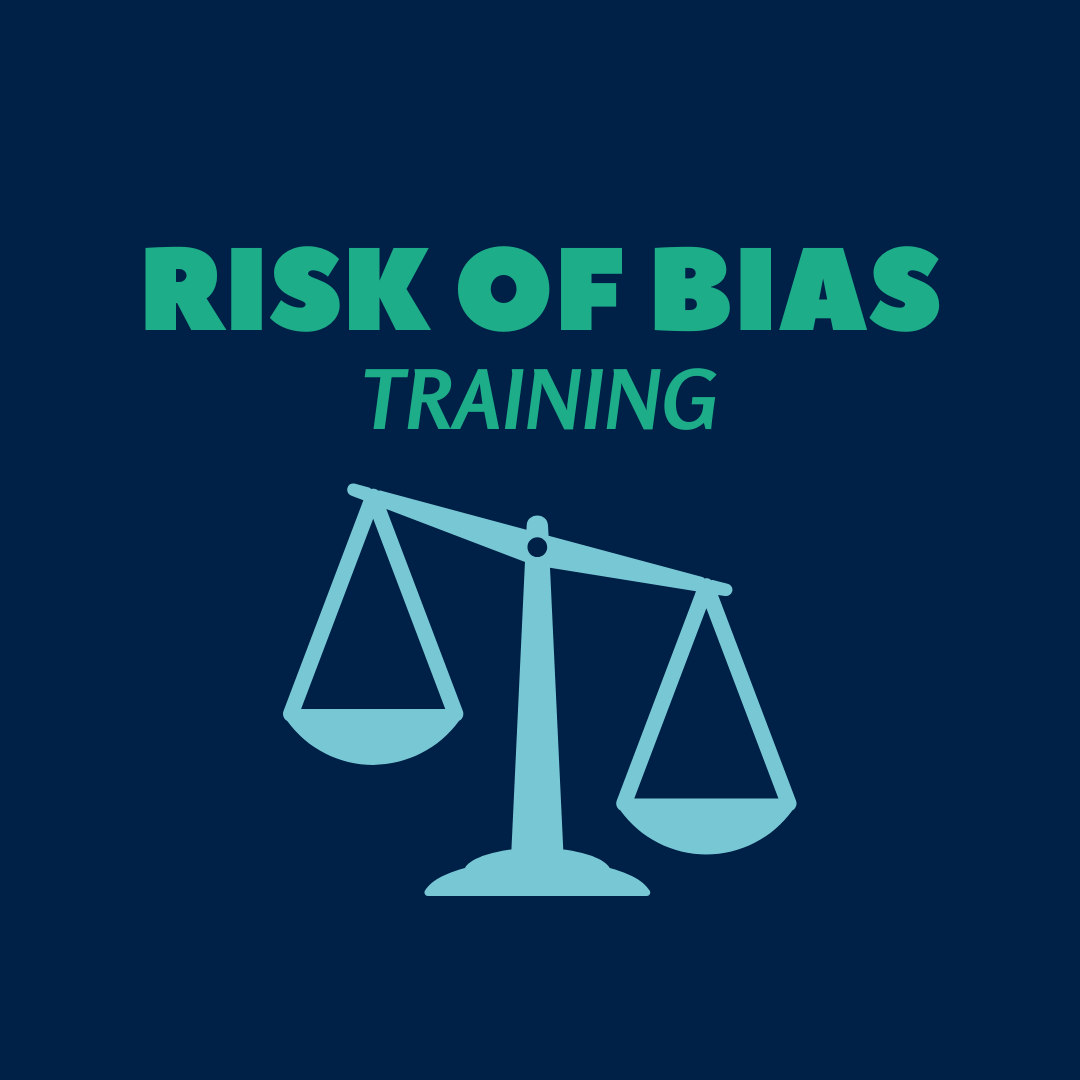This training package consists of a series of short videos that explain the principles behind appraising the risk of bias associated with each of the potential sources of bias listed on the previous page. You should watch the following videos and read the written guidance that accompanies each one. The additional materials listed below are provided for you to apply your learning as you work your way through the training.
Overview
Supporting Materials
In addition to watching the videos, you should refer to the detailed notes in the EEFs guidance document Classification of the security of findings from EEF evaluations. These notes explain in more detail about the potential sources of bias, describe what to look for in a report of research when assessing the risk of bias, and provide signalling questions to help assess each item.
n.b. The section on Minimum Detectable Effect Size (MDES) is not addressed in this training package. The EEF requires that researchers calculate the MDES when conducting research that they fund, but it is rare to find this calculation reported in other reports of research.
You should also download the Security Rating Template in which to record your judgements.
Example Papers
Throughout the training package we refer to an example paper to illustrate making judgements using the EEF Tool. This paper is open access and can be downloaded for free. You should download and read this paper before engaging with the training package, and refer to it throughout.
The paper is: Muhammad Asif Qureshi, M.A. & Aljanadbah, A. (2022). Translanguaging and reading comprehension in a second language, International Multilingual Research Journal,
16(4), 247-257, DOI: 10.1080/19313152.2021.2009158.
Download the paper from this link: https://doi.org/10.1080/19313152.2021.2009158
You will also be asked to assess the risk of bias in two other papers. For each item, you should read the relevant sections of these papers, locate the information that helps you to make a judgement, and then decide the level of risk for that item. You should record your judgement and supporting notes in the security rating template. After each section of the training, the judgement of an experienced rater is provided, with justification, so that you can compare it to your own response. The papers are open access and can be downloaded for free.
Paper 1
Hoferichter, F. & Jentsch, A. (2024). The effects of an online positive psychology intervention on pre-service teachers’ efficacy, ability to cope and emotional regulation. BERJ, 50(5), 2441-2460. DOI 10.1002/berj.4036
Link: https://doi.org/10.1002/berj.4036
Paper 2
Kisida, B., Goodwin, L., & Bowen, D.H. (2020). Teaching History Through Theater: The Effects of Arts Integration on Students’ Knowledge and Attitudes. AERA Open, 6(1), 1-11, DOI 10.1177/2332858420902712.
Link: https://doi.org/10.1177/2332858420902712
Click the button below for an introduction to the EEF Padlock tool and an overview of how to use it to assess risk of bias.


